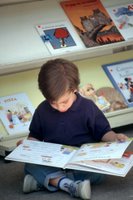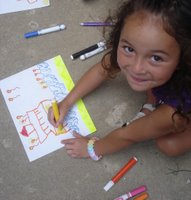The article below, adapted from Kenneth Williams' original, gives pointers on how to help your children develop an interest in math -- so that
math becomes a fun subject (and even one they can get good mark in) rather than a subject to fear or dread. You don't even have to be a math teacher to help!
Here are 5 ways to get your kids excited about math and get them actually looking forward to the next math class:
Inspire themBecause they just
don't see the point of math, many children don't enjoy the subject. Unlike art or reading, all those symbols and numbers don't seem to mean anything. What you need to do is show them how important
math is in the real world.
For example, tell them stories about the great engineering feats throughout history. Without mathematics and mathematicians, the
Great Pyramids of Egypt would have long ago crumbled into dust and the
Hoover Dam (as thick as two footballs fields lying end-to-end, and on top of which 20,000 cars a day drive) would never have been built. As for space travel? Please! We'd still asking:
Papa, Please Get the Moon for Me.
Get practicalGet the kids involved in some real world math away from the classroom. Find something your child is interested in and relate it to math in some way.
For example, do they like
baseball? Terrific. During a game, ask them how many points the losing team has to score to beat the other one. And how many games do they need to win before they have enough points to win the league?
If they enjoy helping
around the home then let them do the "clever stuff". Ask them to work out the
sizes for pieces of wood (or construction paper) you're going to cut. Get them to
measure out the ingredients whenever you're about to bake something.
When you're in a store, ask your kids to add up the prices and keep a
running total while you shop. See if they can calculate how much change you should expect at the checkout -- and if they get the answer right, maybe a small reward would be in order here!
Take life "step-by-step"Success in math -- as in life -- is largely about breaking big projects down into
manageable, bite-sized pieces.
Many kids feel overwhelmed when they see a list of math questions, and it's at this point they may decide that math is "boring" or "hard". Show them the magic of taking one question at a time, and breaking it into tiny steps that make it easy.
Remind them that they didn't
always know that 2 + 2 = 4. Back in the "old days", when the kids were just babies, 2 + 2 seemed like higher mathematics!
Encourage creativityKids sometimes become mentally "stuck" on a topic because they're only looking at it in one way. Perhaps they need to step outside the box and
see it from a different angle. This isn't only a math-related skill, of course. Showing them the beauty of alternative viewpoints and helping them to see situations from other people's perspectives are skills that will help your children throughout their lives.
Get them into the habit of exploring different ways of solving
any problem. Even something simple tasks like tidying up a room can have several possible "solutions" or ways of approaching it. Crosswords and lateral thinking puzzles are good for this kind of flexible thinking.
Certainly when it comes to math, use drawings and/or manipulatives to present concepts in ways that are literally
hands on.
Be positiveEliminate negative statements like "math is hard" (even if you think so yourself). Explain that everyone has the innate ability to do math and that solving math problems isn't so different from solving other kinds of problems in life --
math is just a skill learned over time, one "block" of learning on top of the last.
By encouraging your children to accomplish even in areas they find difficult, you will give them the
gift of confidence when they do succeed. By teaching them persistence and the belief that there's
always a solution to every problem (as long as they keep trying and don't give up), you'll give them
hope together with
concrete strategies for accomplishing life goals.
And keep it light! Remember, we all perform better when we enjoy what we do, and
getting kids interested in math is the real key to success.
Now who
said your kids couldn't do math?
~~~~~~~~~~~~~~~~~~~~
I recommend the ebook
Fun With Figures as a great math resource. It shows anyone -- whatever their math ability or grade level -- the easy way to do mental math.
Visit the site today and find out what
you didn't learn in the math class.
~~~~~~~~~~~~~~~~~~~~
categorieschildren's learning games kids sites educational fun homeschoolLabels: Grade 4 math, math, mental math







